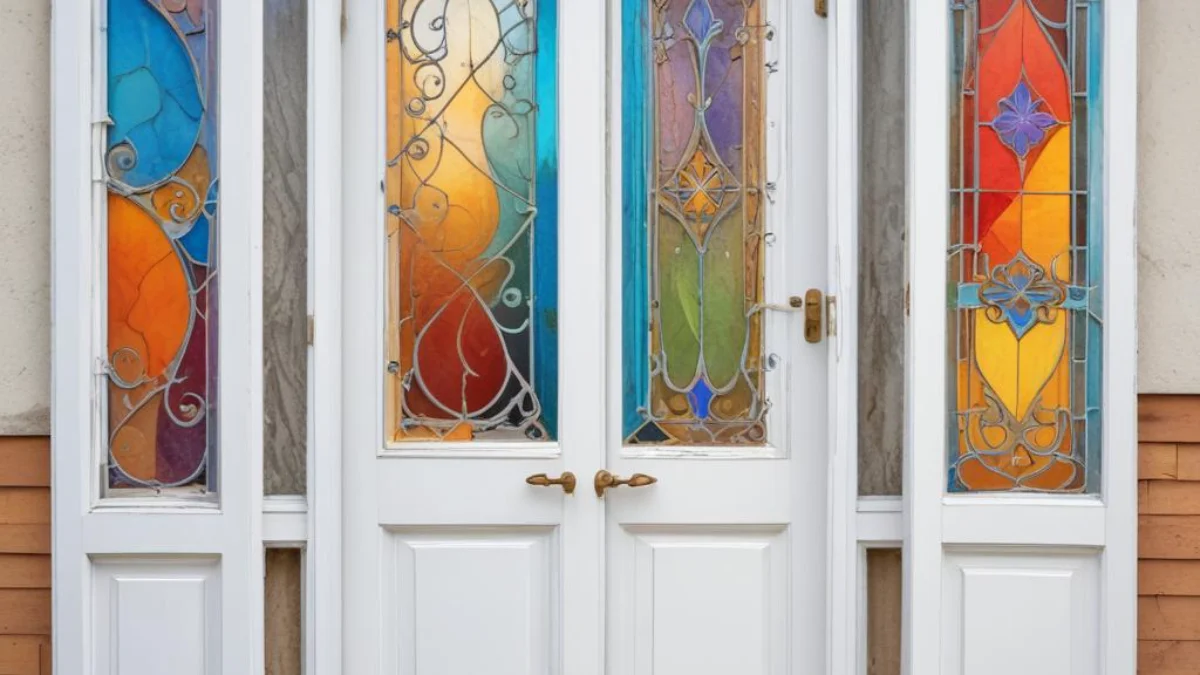Switch a French Door from Right to Left Opening! Unlock Your Space
French doors add a touch of elegance and an abundance of light to any room. Their classic design, however, can sometimes present a modern-day problem: the swing direction.
You may find that a right-opening door obstructs a walkway, clashes with furniture placement, or simply feels awkward in your home’s layout. This guide will show you how to reverse your French door’s swing.
You'll Learn About
Why You Might Need to Reverse Your French Door Swing
The most common reason for wanting to change the swing of a French door is to improve room flow and functionality. A door that opens into a high-traffic area can be a constant annoyance and even a safety hazard.
Reconfiguring a room’s layout, adding new furniture, or simply wanting to optimize your living space can all be powerful motivators for this project. The goal is to make your home work for you, not the other way around.
Assessing Your Door: Is a Reversal Possible?
Before you grab your tools, it’s crucial to determine if your French door can even be reversed. Most modern French doors are designed to be reversible, but older or custom-made doors might not be.
Inspect your door and its frame carefully. Look for symmetrical hinge and latch preparations. If the door has a decorative trim that is not uniform on all sides, a simple reversal might not be aesthetically pleasing or even possible without significant cosmetic work.
Another key factor is the door’s bevel. On the latch side, one edge of the door is slightly angled to allow it to close smoothly without binding against the jamb. When you reverse the door, this bevel will be on the wrong side. This often means you will need to plane a new bevel on the opposite edge for a proper fit.

The Reversal Process: A Step-by-Step Guide
Reversing a French door is a moderately challenging DIY project that requires precision and patience. With the right tools and a methodical approach, you can achieve a professional-looking result.
This process involves removing the door, preparing the new hinge and latch locations on the opposite side of the frame, and then rehanging the door. It’s more than just flipping it around; it’s a careful relocation of all its hardware.
Essential Tools and Materials
Gathering all your tools before you begin will make the process much smoother. Having everything on hand prevents frustrating interruptions and helps you stay focused on the task.
Working with a partner is also highly recommended, as French doors can be heavy and awkward to handle alone.
| Tool/Material | Purpose |
|---|---|
| Drill/Driver | Removing and installing screws for hinges and hardware |
| Chisel (sharp) | Creating new hinge mortises in the door frame and door |
| Hammer | Used with the chisel to cut mortises |
| Utility Knife | Scoring the outline of the new hinge mortises |
| Measuring Tape | Ensuring accurate placement of all hardware |
| Pry Bar | Gently removing door stop molding |
| Wood Filler | Filling old hinge mortises and screw holes |
| Sandpaper | Smoothing wood filler and preparing for paint |
| Paint/Primer | Touching up the frame and door after modifications |
| Safety Glasses | Protecting your eyes from wood chips and debris |
Step 1: Carefully Remove the Door
The first step is to remove the active door panel from the frame. Start by closing the door and placing wedges or shims underneath to support its weight. This prevents the door from falling when you remove the hinge pins.
Using a hammer and a nail set or a large nail, gently tap the hinge pins upward and out of the hinges. Start with the bottom hinge and work your way up. With the pins removed, carefully lift the door off the remaining hinge halves and set it aside in a safe place.
Step 2: Prepare the Door Frame for the New Swing
With the door removed, you can now address the frame. The old hinge mortises and screw holes must be filled for a clean, professional finish. Use a quality wood filler, applying it in thin layers until the voids are completely filled. Allow it to dry thoroughly according to the manufacturer’s instructions.
Once dry, sand the filled areas smooth so they are flush with the rest of the door jamb. You will also need to carefully pry off the door stop molding from the top and the side where the latch was. You’ll be reinstalling this on the opposite sides later.
In some projects, knowing how to properly join wood, like understanding how to screw 2x4s together perpendicularly, can provide valuable background knowledge for handling frame modifications.
Step 3: Cutting New Hinge Mortises
This is the most critical step and requires great precision. You will now cut new mortises (shallow recesses) for the hinges on the opposite side of the door frame. Use one of the hinges as a template to mark the exact locations.
The new hinge positions must mirror the old ones exactly. Measure their previous locations from the top and bottom of the jamb and transfer these measurements to the new side. Trace the outline of the hinge with a pencil, then score this outline with a sharp utility knife.
Using a sharp chisel and hammer, carefully remove the wood inside the scored outline to the depth of the hinge plate. Work slowly and check the depth frequently to ensure the hinge will sit perfectly flush with the jamb surface.
Step 4: Prepare the Door for Reversal
Now, turn your attention to the door itself. You need to fill the old hinge mortises on the door’s edge, just as you did on the frame. Apply wood filler, let it dry, and sand it smooth.
Next, you’ll create new hinge mortises on the opposite edge of the door. Again, accuracy is paramount. Transfer the hinge locations precisely. Score, chisel, and check the depth until the new mortises are perfect.
You will also need to reverse the door latch and handle hardware. Remove the handles, latch plate, and the entire latch mechanism from the door edge. You will then install them on the opposite side, which may require drilling a new hole for the latch bolt.
Step 5: Rehanging the Door
With all the preparations complete, it’s time to hang the door in its new left-opening configuration. Position the door in the frame, using shims to get the correct height and spacing. Screw the new hinges into the mortises on the door first, then attach them to the new mortises on the frame.
Install the hinge pins, starting from the top. Remove the shims and test the door’s swing. It should open and close smoothly without binding. Make any necessary minor adjustments to the hinge positions.
Step 6: Installing the Latch Hardware and Door Stop
The final steps involve the latching mechanism. With the handle and latch reinstalled on the door, close the door to mark where the latch bolt meets the jamb. This is where you will need to install the strike plate.
You may need to chisel a mortise for the strike plate and drill a hole for the bolt. Fill the old strike plate location on the other side of the frame with wood filler. Finally, reinstall the door stop molding on the new sides to create a seal when the door is closed.
Once everything is in place, you can do your final touch-ups with primer and paint to conceal all your hard work, leaving a flawless finish.
Considering Professional Help
While this guide provides a comprehensive overview, reversing a French door can be a complex task. If you’re not comfortable with precision woodworking or don’t own the necessary tools, hiring a professional carpenter is a wise choice.
A professional can ensure the job is done correctly, preventing potential damage to your expensive door or frame. The cost of a professional will vary but guarantees a perfect fit and finish.
Just as you might wonder about the specifics of your home’s systems, like how hot an attic can get, it’s always good to know when a project is within your skill set or best left to an expert. Some complex items, like understanding how fragile water heaters are, clearly fall into the professional category for most homeowners.
Conclusion: A Rewarding Home Improvement Project
Switching a French door from right-opening to left-opening is an achievable DIY project that can dramatically improve the comfort and flow of your home. It requires careful planning, precise measurements, and a bit of patience.
By following these steps, you can successfully reconfigure your doorway to better suit your lifestyle. The result is a more functional, intuitive space that feels custom-built for your needs.

